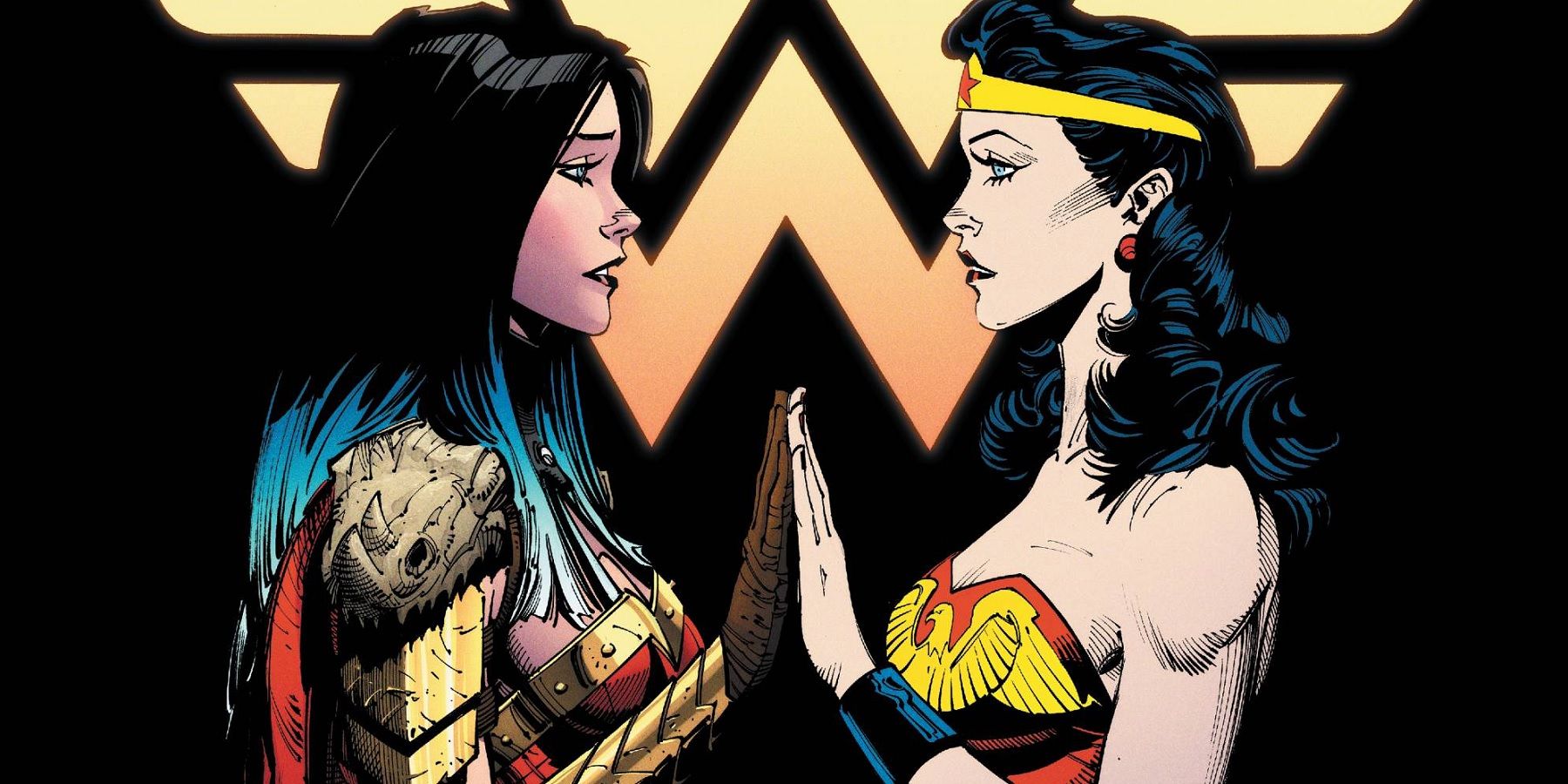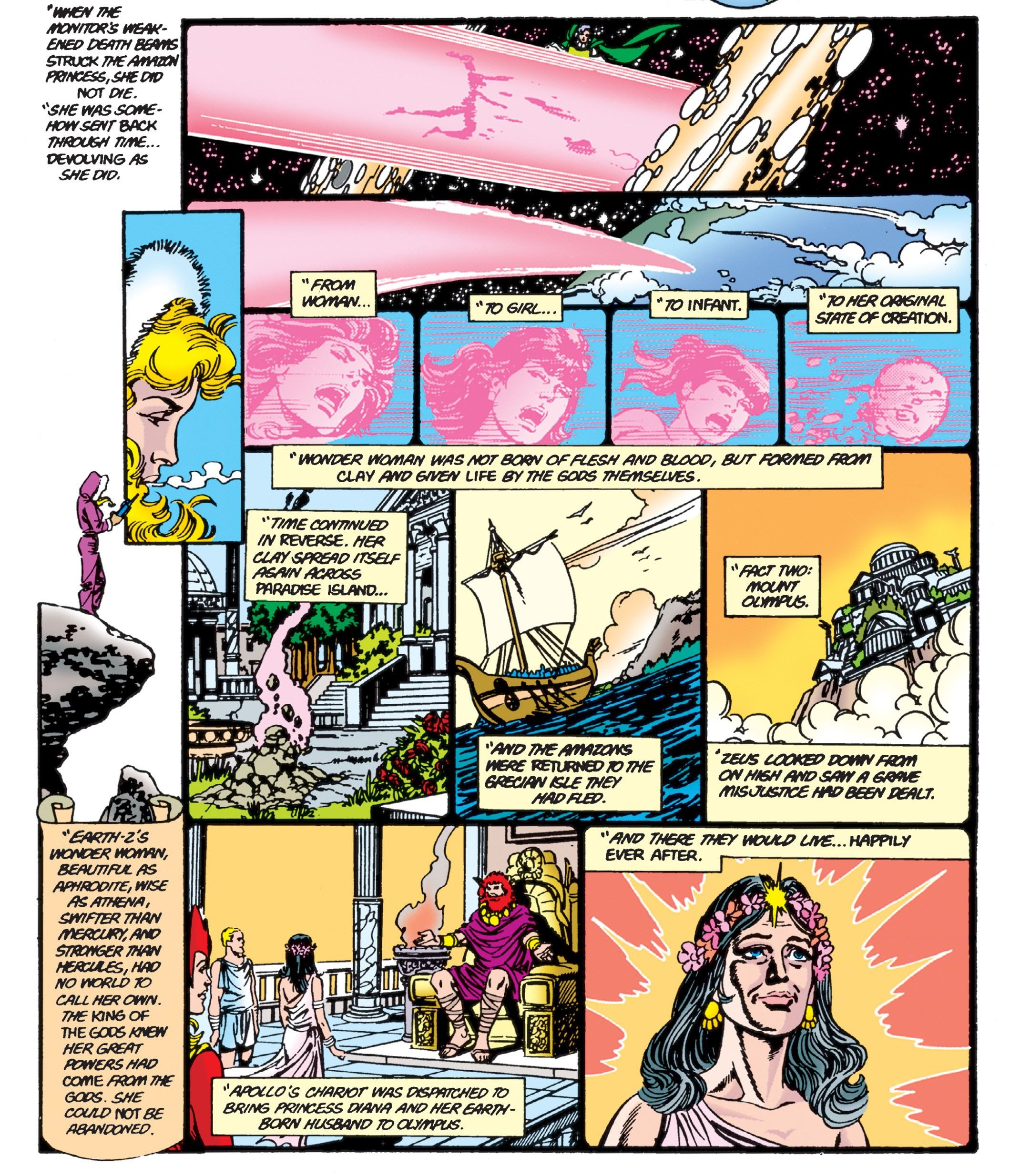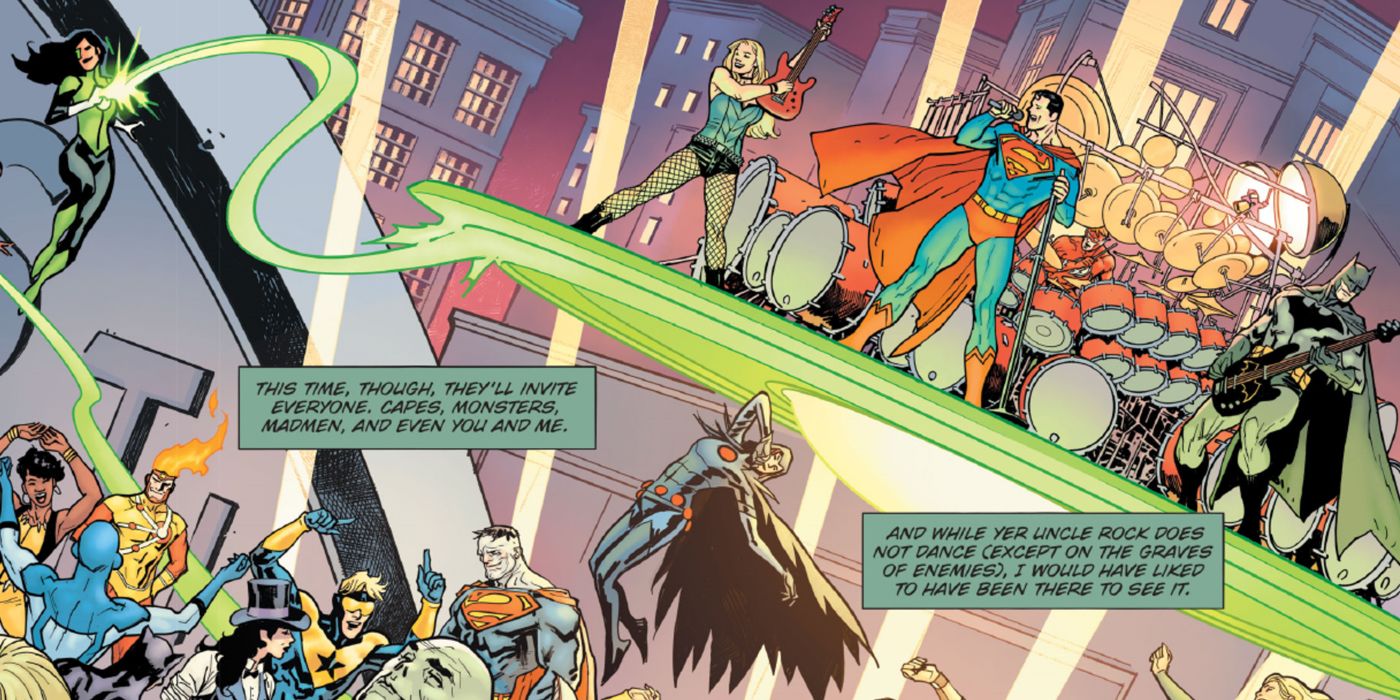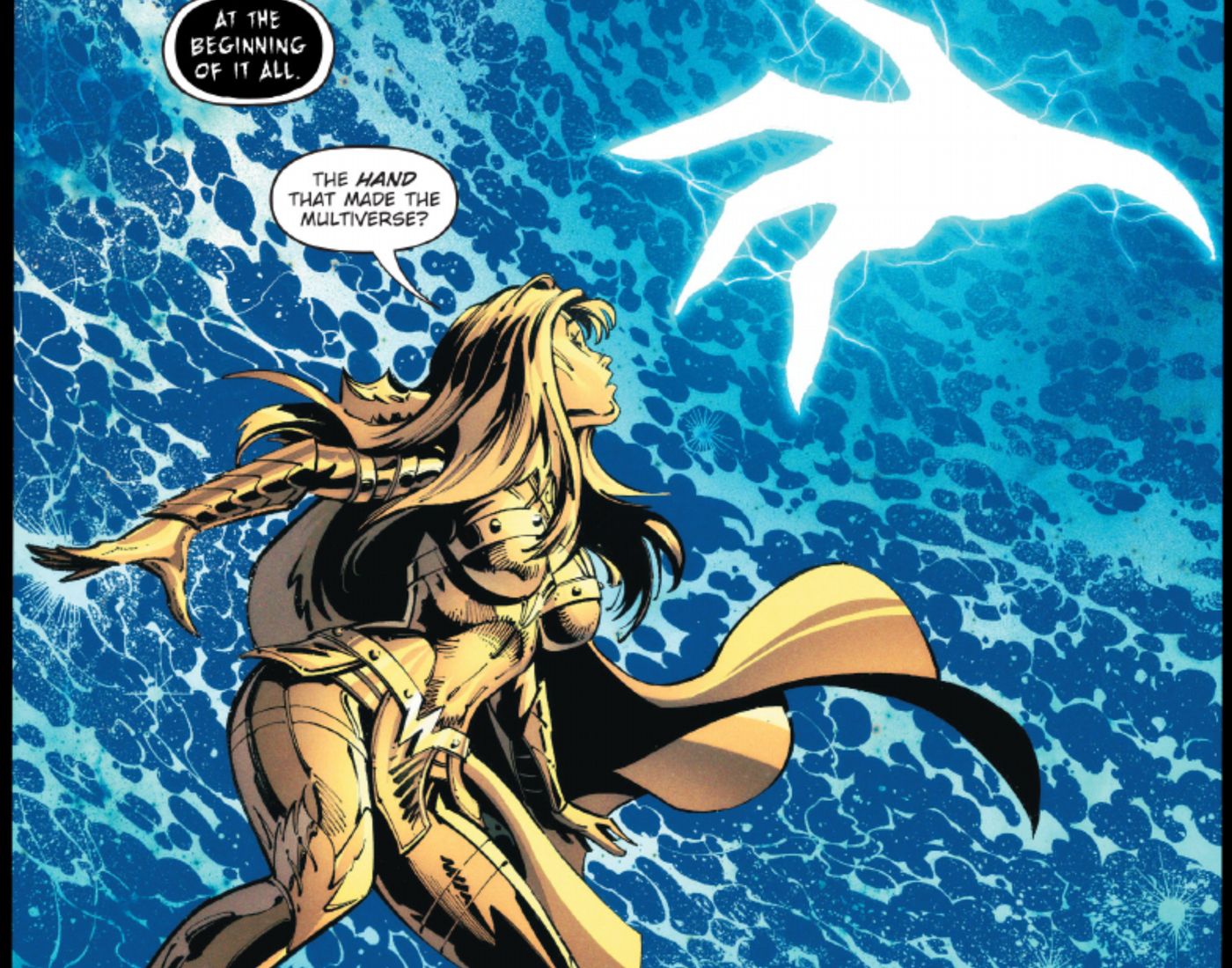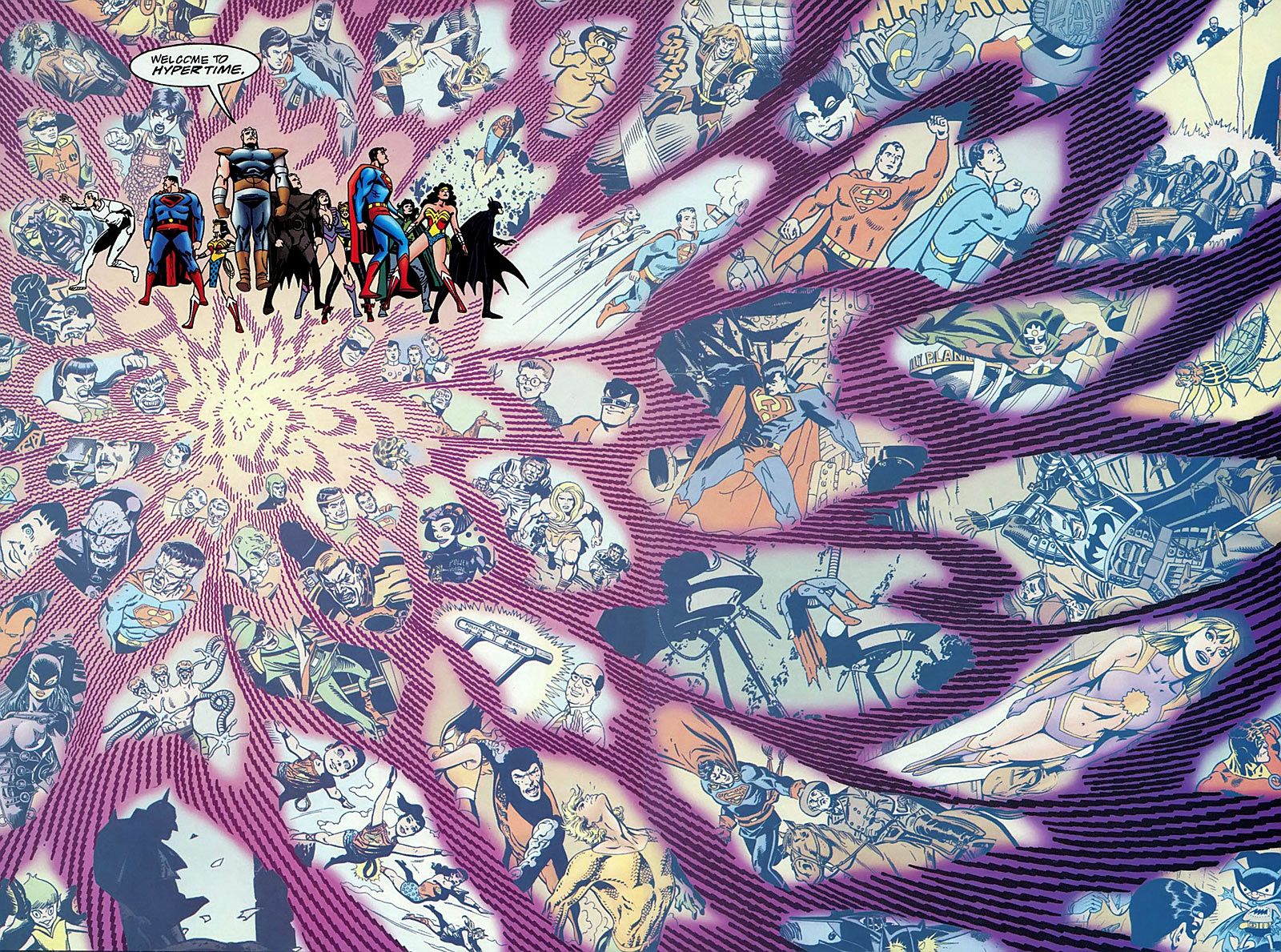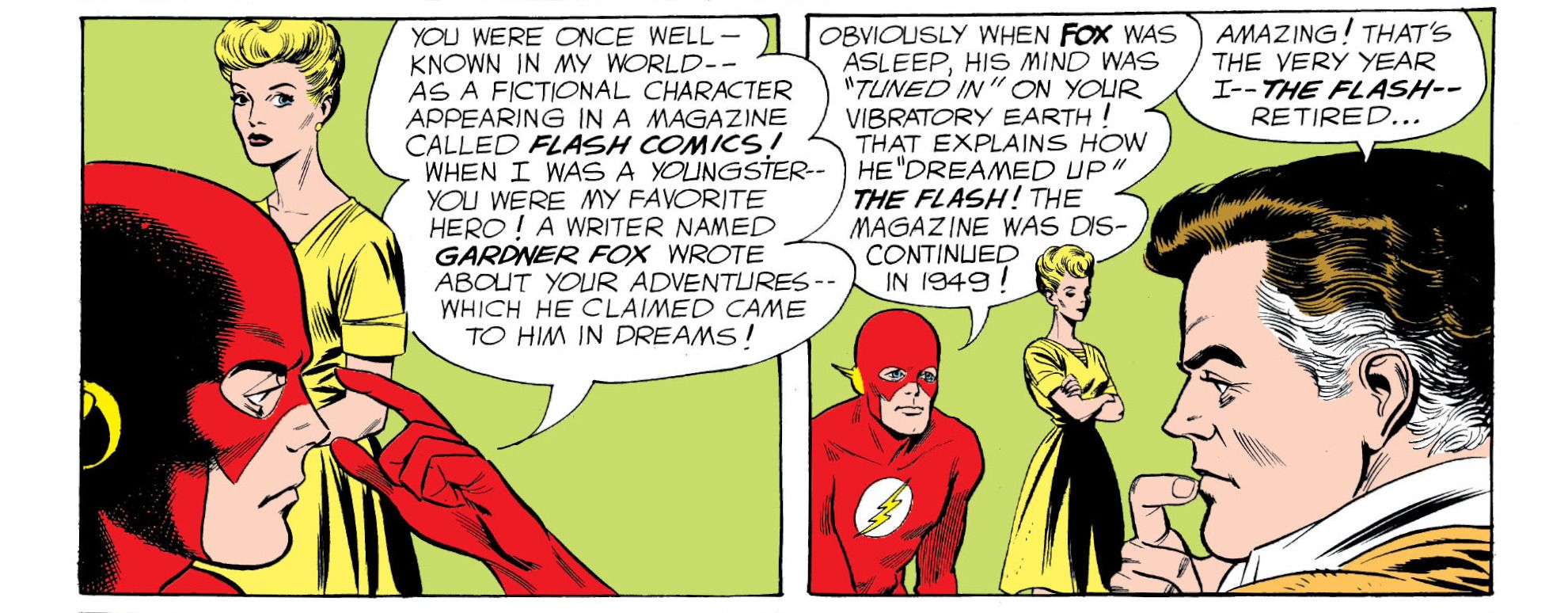JarroWARNING: The following contains spoilers for Dark Nights: Death Metal #7, by Scott Snyder, Greg Capullo, Jonathan Glapion, Yanick Paquette, Bryan Hitch, Nathan Fairbairn, Alex Sinclair, FCO Plascencia & Tom Napolitano, on sale now.
It's been years in the making, but it looks like the end of the Metal saga is finally here. Dark Nights: Death Metal #7 caps off DC's most recent attempt at continuity wrangling. Its roots go back at least to August 2017's Dark Days: The Forge. If we include Geoff Johns and Gary Frank's efforts in Doomsday Clock, that stretches a year farther, to July 2016's DC Universe Rebirth special.
In any event, DC has been wrestling with its timeline for a while now, so we'll explore how Death Metal sets up DC's shared superhero universe for 2021 and beyond. It aims to be the last cosmic crossover readers will ever need, and it might just have succeeded. Therefore, grab your copy of Death Metal #7 and settle in for the final round of minutiae, Easter eggs and analysis.
Final(ish) Fates (Pages 1, 4, 20-21, 29-31)
On Page 1, Sgt. Rock notes that Wonder Woman "has been a god before." This happened during John Byrne's run on Wonder Woman, when she was made the Goddess of Truth after dying and ascending to Mount Olympus, during a battle with the demon Neron. It was chronicled in issues #124-127 (August-November 1997). Previously, the Earth-Two Wonder Woman had gone to live on Olympus – or at least one version of it – in March 1986's Crisis On Infinite Earths #12; but that's not quite the same thing.
That's not to say that Crisis #12 didn't give the Earth-One Amazing Amazon her own sendoff. When Wonder Woman walks off into the white void (Page 31) with one of the Hands, it recalls that final issue, when the Anti-Monitor sent the Earth-One version back through time, literally rewinding her existence and transforming her back into the Paradise Island clay from which her mother sculpted her. Now the Hand tells the current Diana she must "ascend," but clearly that's nothing new.
Having the Batman Who Laughs hit Wonder Woman "so hard they fall back through time" (Page 4) is the sort of physics-busting item that non-comics readers might expect to find in a superhero comic. (Again, see Crisis #12.) Naturally, there is a precedent in Superboy-Prime's reality-altering punches, which were first described in December 2005's Infinite Crisis #1.
As for the erstwhile Boy of Steel, Superboy-Prime's fate (alluded to on Page 1) was revealed in February 2021's Dark Nights: Death Metal – The Secret Origin one-shot. Spoilers: during his fight with the Batman Who Laughs, he sucks all the energy out of the Darkest Knight's evil Earths. Although he loses the fight, he gets a do-over as a (presumably well-adjusted) super-powered teenager. When the Darkest Knight suggests on Page 22 that he can "give everyone an Eden," it made us wonder if that's what happened to Superboy-Prime at the end of the Secret Origin special; but it's just as likely that Superboy-Prime is off in the new Multiverse somewhere, literally living his best life.
We like how the Death Sun (Pages 20-21) is a bloated red giant. That's what happens to stars when they die of old age. Specifically, it's what happened to Krypton's star in a few accounts of Krypton's destruction. Accordingly, the red star symbolizes something that's grown too ancient and huge to be sustainable, and it doesn't have a pretty end.
Party Time (Pages 34-40)
Along with Jarro providing some more cowbell on Page 34, Page 34 sees the Death Metal superhero band come together. Page 35 Wally West is playing drums, perhaps in homage to his late teammate Roy Harper, who – thanks to Elliot S! Maggin and Dick Dillin in June 1974's Action Comics #436 – was the drummer for the criminally-underrated garage band Great Frog. Since everything matters now, we must point out (as we did in the Metal #6 annotations) Peter Parker's memory of seeing them from October 2009's Amazing Spider-Man #601.
It was perhaps inevitable that Death Metal's new headquarters for the Totality (Pages 36-37) would be located on the Dark Side of the Moon. Not only is it accessible by vibrating at a particular super-speed frequency, but you can probably also get to it by cueing up The Wizard of Oz. We will also point out, with just a tad more seriousness, that the Justice League's lunar Watchtowers have been on the Light Side, where they can look out on the Earth.
Pages 38-39 call back to The Multiversity and its the Justice Incarnate team, Hypertime, and look forward to the Future State event. Members of Justice Incarnate on Page 38 include Captain Carrot (Earth-26), Aquawoman (Earth-11), Mary Marvel (Earth-5), Superman (Earth-23) and Batman (Earth-17.)
The phrase "Infinite Frontier" (Pages 39-40) recalls DC: The New Frontier, Darwyn Cooke's seminal 2003-04 period piece reimagining the heroes of DC's Silver Age during the late '50s and '60s. New Frontier sought to reframe the Justice League and their colleagues as emblematic of President Kennedy's optimistic outlook on the early Space Age, so we wouldn't be surprised if "Infinite Frontier" is supposed to evoke similar good feelings.
On Page 40, we learn that the reborn Multiverse has two centers. Sadly, neither is probably creamy nougat. In the Silver Age Multiverse, the planet Oa – headquarters of the Green Lantern Corps – was at the center of the universe of Earth-One. For the most part, Oa was unique among the various parallel universes. (We can't be sure, considering the whole "infinite" thing.) Much later, 2010's Blackest Night miniseries established that Earth was – as one might expect – central to all of creation. Death Metal #7 states that "an" Earth is one center of the Multiverse, but it's not the main DC-Earth anymore.
Starting basically in 1989 with the Gotham By Gaslight graphic novel, DC started classifying all of its weird alternate-history tales as "Elseworlds" (which Page 40 name-checks). After the institution of the 52-part Multiverse in 2007, some of these Elseworlds were assigned to actual parallel Earths that our mainline heroes could visit. These included Gaslight (where 1889 Batman fought Jack the Ripper), the aforementioned New Frontier, the Red Rain trilogy's Vampire Batman, Superman: Red Son, Kingdom Come, the "Earth One" series of original graphic novels and earlier works like The Dark Knight Returns.
The Hands at the Heart of the Multiverse (Pages 11-12, 22, 25, 28-30)
Pages 11-12 give us a bit more background on The Hands, whom we see on Pages 22 and 25. Most significantly, Page 12 tells us that the Hands are Perpetua's species. That does make it a little easier to believe that the Batman Who Laughs could have destroyed the Hands; but by the same token, Perpetua maybe shouldn't have been as intimidated by them as she seemed to be.
Actually, we're not sure that the Batman Who Laughs could have killed the Hands. Sure, he's got the power of Doctor Manhattan, but that's not necessarily infinite. Tachyons mess with Dr. Manhattan's perceptions, and Ozymandias got the jump on him with that field-disruptor trap in Watchmen #12. Besides, Doctor Manhattan was probably only the most powerful being in his particular universe, whereas the Hands manage whole multiverses. Thus, it seems like the Batman Who Laughs' was just a stop along the way to the Hands' ultimate sit-down with Wonder Woman.
Speaking of which, one Hand is personified as the Golden Age Wonder Woman in the white-space sequence of Pages 28-30. This is not quite Wonder Woman's original Harry Peter design, although that did have a white belt and skirt instead of shorts. The Golden Age Wonder Woman's tiara went around her hair and wasn't covered partially by it. The tops of her boots also curved outwards. These are very minor nitpicks, though, and the homage is still clear and appreciated.
On Page 28, the Hand indicates to Wonder Woman that she's disappointed her Multiverse didn't try to become something greater; but instead, it fought "against such growth [...] to revel in its basest instincts." We understand how DC's various attempts at streamlining have made its timeline feel more compact, and therefore less inclusive; but overall, those attempts have resulted in a bigger milieu in the long run.
The Silver Age Multiverse was introduced almost 60 years ago in September 1961's "Flash of Two Worlds" (Flash #123); and it lasted some 24 years. The next 25 years, from the end of Crisis On Infinite Earths at the end of 1985 to the New 52 relaunch in August 2011, also saw growth in a different direction, adding generations instead of parallel worlds. The New 52 did scale things back dramatically (although it leaned into the Multiverse with a handful of Earth-2-oriented series); but it only lasted 5 years before the DC Rebirth initiative started re-integrating elements of the old continuity – including the pre-New 52 Superman, Lois Lane and Wally West. However, the streamlining attempts removed or rebooted key characters like Superboy, Supergirl, the Justice Society, the Legion of Super-Heroes at various points, so maybe the Hand is talking about that.
New Year, New Universe
In case it hasn't been clear so far, we approve of Death Metal's everything-matters approach to DC continuity. Call it case-specific or situational, it seems to establish a base timeline with plenty of room for variations. We may get a better sense of it after "Future State" ends, but for now it appears to be a more fortified version of Hypertime.
Devised by Grant Morrison and Mark Waid in 1998, it was first depicted in February 1999's The Kingdom #2, written by Waid and penciled by Mike Zeck. Basically, Hypertime held that the main DC timeline was just one among an infinite number, and occasionally those timelines would intersect. Thus, in the Kingdom: Planet Krypton tie-in, Batman saw a vision of the original Kathy Kane Batwoman and remembered his time with her despite her being written out of continuity at that point. Superboy #61-64 (April-July 1999) and The Flash #150-59 (July 1999-April 2000) both used Hypertime to explore alternate versions of their headliners. It was basically a way to reintroduce an infinite Multiverse during the post-Crisis On Infinite Earths era, when DC had officially decided to be done with the actual infinite Multiverse.
Ever since the end of 52 in 2007, though, DC has been creeping closer to the infinite Multiverse. 52 established a finite, 52-fold Multiverse; and the New 52 relaunch tweaked it somewhat. Doomsday Clock then revealed that the main DC timeline is actually a "metaverse," changing and updating itself to account for new versions of Superman. Now Death Metal has expanded on that notion, such that there are "an infinite web of multiverses" (as Luthor says on Page 39) comprising an "Omniverse." It sounds complicated, but in practice, we think it will allow for a more expansive approach to the stories themselves. Obviously, there will be a singular timeline, probably very similar to the multigenerational one rolled out some 35 years ago after Crisis On Infinite Earths. We suspect most stories going forward won't conflict too much with that. The difference may be as simple as not automatically dismissing a story because it has some conflicting elements.
Additionally, thanks to the revived Multiverse, DC may start going back to regular visits with parallel Earths which are clearly divergent. Justice Incarnate's cameo at the end of this issue reminds us that the parallel universes from The Multiversity are still out there; and Batman 1939's presence in the Generations Shattered special suggests that DC may be setting up a new version of the original Earth-Two. That would be especially fitting, because the Silver Age Multiverse itself was predicated on the notion that Jay Garrick and friends "really" existed, just on a parallel plane where their adventures could filter into the imaginations of Gardner Fox, Bob Kanigher, Carmine Infantino and Julius Schwartz. All those Golden Age stories "mattered" again, because they provided the foundation for a world that could grow and change in ways radically different from the Justice League's Earth-One.
In a very real sense, then, Death Metal fulfills the promise of all those different Metaverse timelines teased in Doomsday Clock #12. In addition to the classic Earth-Two, it depicted Earth-1985 (a version of Earth-One where the Crisis never happened), Earth-(New) 52, and a host of others. Doomsday Clock #12 also promised that "[i]n the year 2020, Superman's timeline [would be] bombarded by the reckless energies of the old gods, once again warping the Metaverse." That's just vague enough to reconcile with the events of Death Metal – which, when you think about it, may be one way to make continuity work going forward.
Ironically, we still haven't worked out where Doomsday Clock fits in the timeline; but that's what keeps some superhero readers going, isn't it?
We close this round of annotations with incalculable thanks to those whose websites helped our research greatly, including the DC Database, DCU Guide, and Mike's Amazing World Of DC Comics. We also relied on Phil Jimenez and John Wells' The Essential Wonder Woman Encyclopedia and Robert Greenberger's The Essential Batman Encyclopedia. Greenberger and the late Martin Pasko (1954-2020) also wrote The Essential Superman Encyclopedia.
Finally, we pause to remember comics writer and historian Michael Fleisher (1942-2018), who started us down this road with his trilogy of mid-1970s reference works, The Great Superman Book and The Encyclopedia Of Comic Book Heroes, Volume 1: Batman and Volume 2: Wonder Woman. He wasn't the first fan to try and make sense out of 30-odd years of superhero comics, but he sure put in the hours.
When you lay out all these stories and characters like squares in some huge quilt, you want them to combine into something grand and beautiful. Sometimes those squares don't quite work with their neighbors, and sometimes they're just not that pleasant to behold. However, each one contains a bit of the person or people who created it; and those details are worth exploring too. They all matter, and we're glad Death Metal made that its mission. It's worth remembering as we move into the future, one issue at a time.

